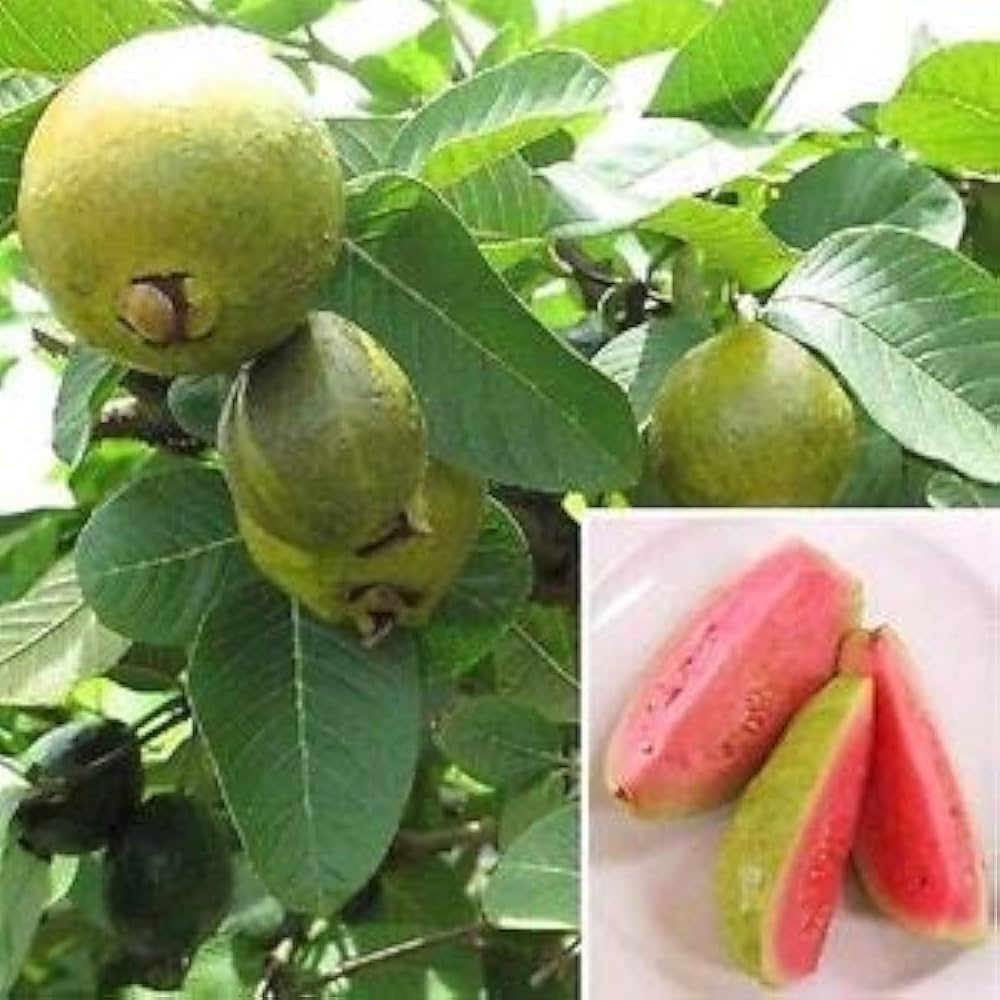1. Choose the Right Guava Variety
- Dwarf or Container Varieties: Opt for varieties like ‘Barbie Pink’ or ‘Thai White,’ which do well in pots or small spaces.
- Seedless Varieties: If you prefer easy eating, look for seedless guava types.
2. Planting Tips
- Container: Use a large pot (at least 18-24 inches deep and wide) with good drainage for patio gardening.
- Soil: Guava thrives in well-draining, loamy soil. Enrich with organic compost for better fruit yield.
- Location: Plant in a spot with 6–8 hours of full sunlight daily.
3. Watering Needs
- Young Plants: Water regularly to keep the soil moist but not soggy.
- Mature Plants: Water deeply once or twice a week, depending on the climate. Guavas are drought-tolerant but perform better with consistent moisture.
4. Fertilizing Tricks
- Use a balanced fertilizer (10-10-10 NPK) during the growing season.
- Supplement with organic matter like compost or well-rotted manure every 2–3 months.
- Apply micronutrients like zinc and iron if you notice yellowing leaves.
5. Pruning and Training
- Shape Your Tree: Prune regularly to maintain size, especially if growing in a pot. Remove dead or crossing branches.
- Encourage Fruiting: Prune after harvest to stimulate new growth and better flowering.
6. Pollination Hack
- If your guava tree is not fruiting, consider hand-pollinating flowers using a small brush to transfer pollen. Guavas are mostly self-pollinating, but this can boost fruit production.
7. Pest and Disease Control
- Common Pests: Watch for aphids, mealybugs, or fruit flies. Use neem oil or insecticidal soap to manage infestations.
- Fungal Issues: Avoid overwatering and ensure good airflow to prevent fungal diseases.
8. Seasonal Care
- Winter Protection: Cover the plant with a frost cloth or move it indoors if temperatures drop below 30°F (-1°C).
- Mulching: Apply mulch around the base to retain moisture and regulate temperature.
9. Harvesting Tips
- Guavas are ready to harvest when they change color (green to yellow or light pink) and soften slightly.
- For sweeter guavas, leave them on the tree for a few more days after they ripen.
10. Propagation Shortcut
- Guava trees can be propagated from seeds, cuttings, or air-layering. For faster fruiting, use grafted plants or air-layered cuttings.
Would you like tips specific to growing guava in your Arizona climate?
